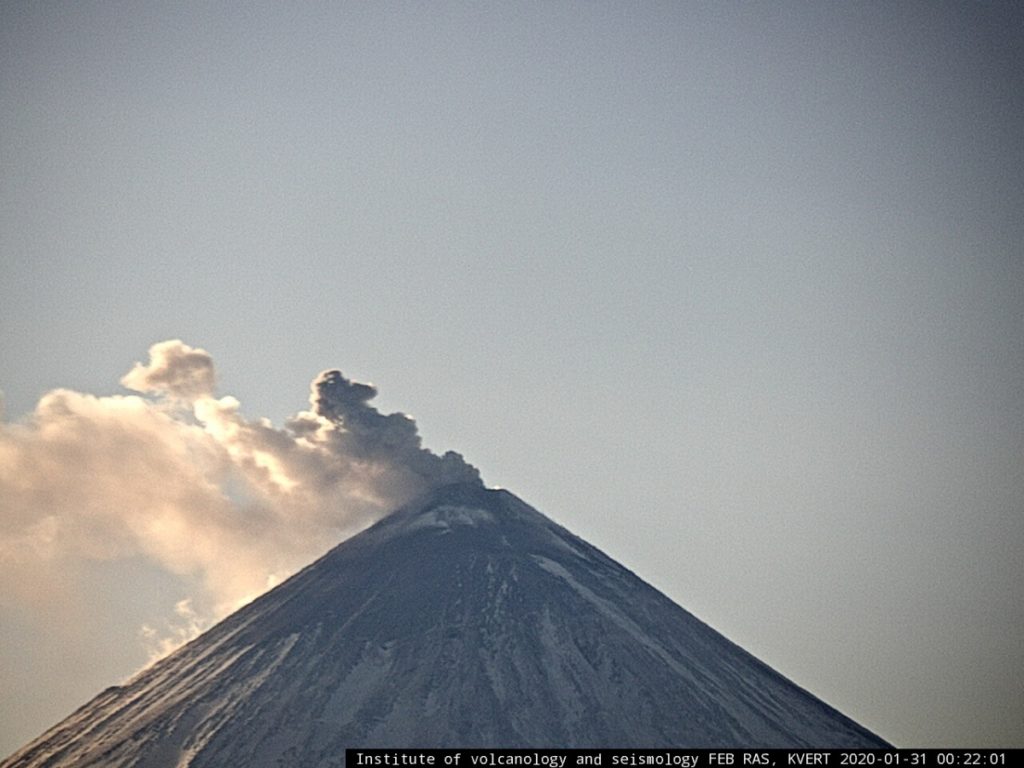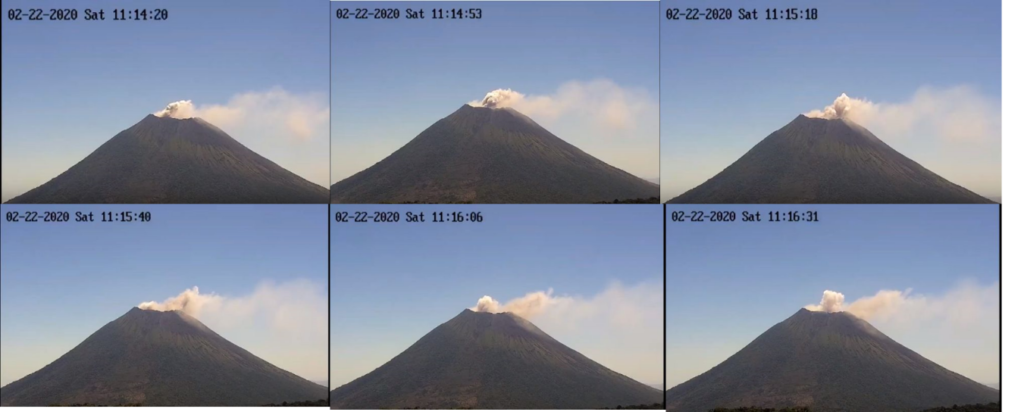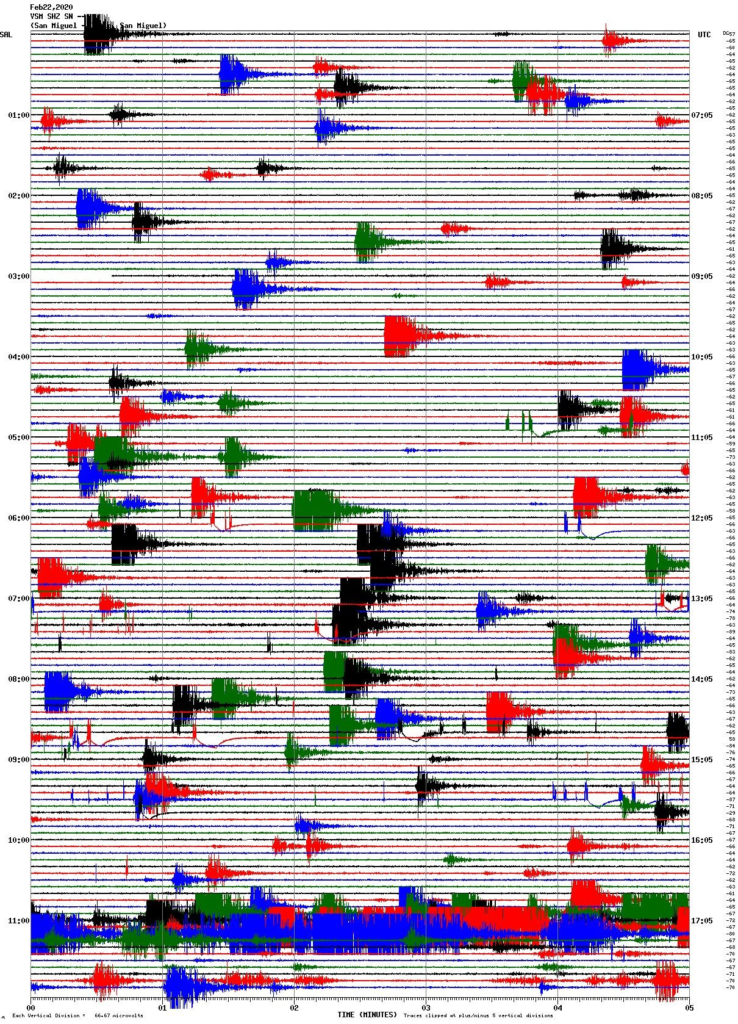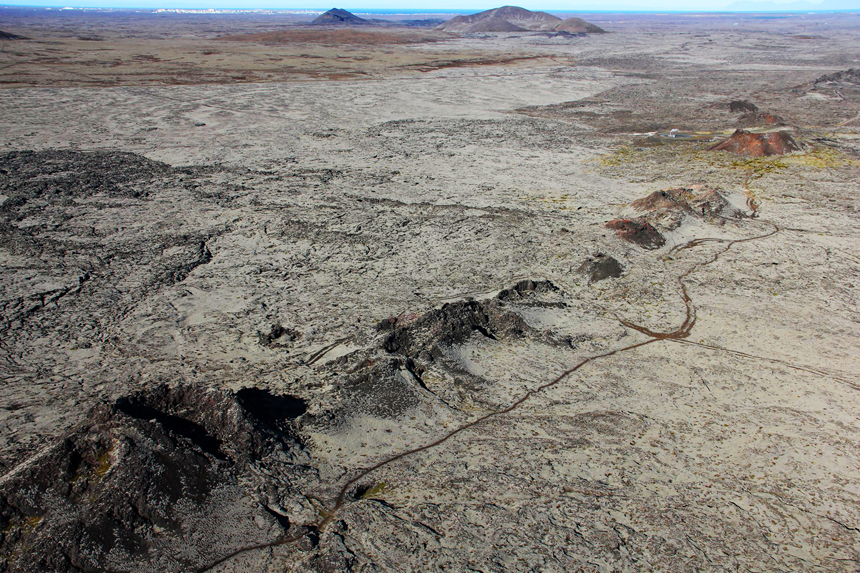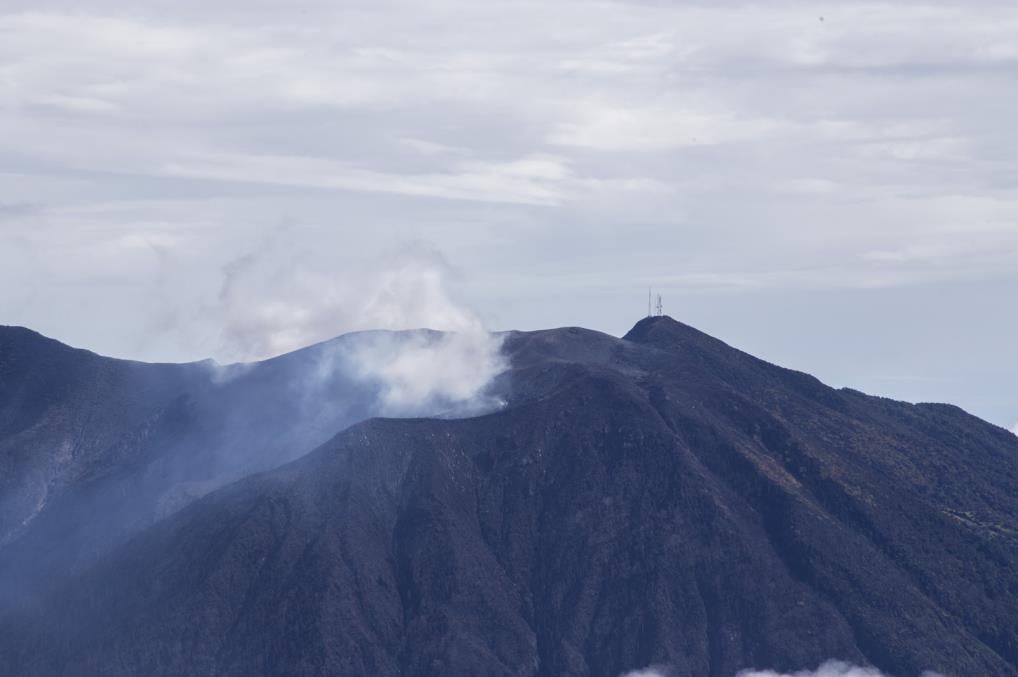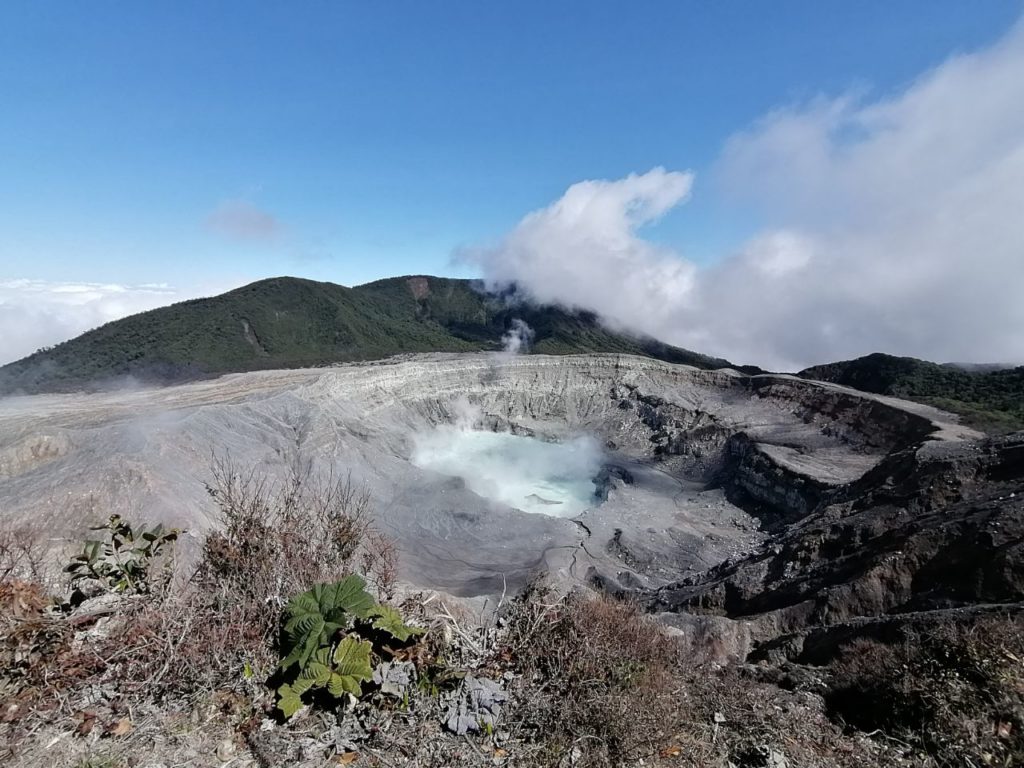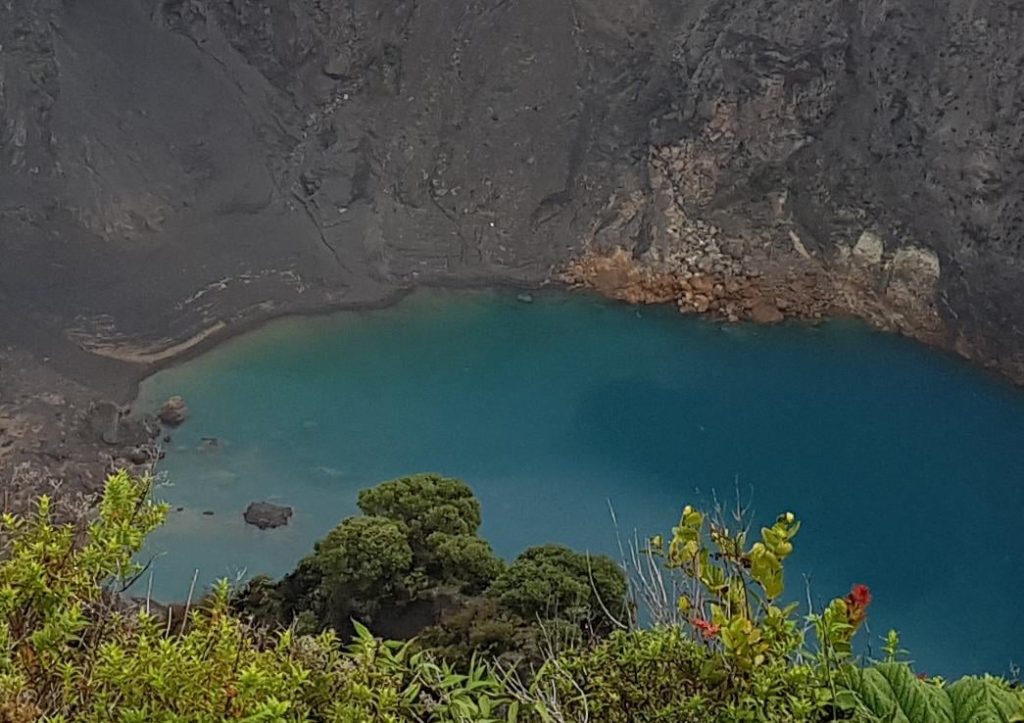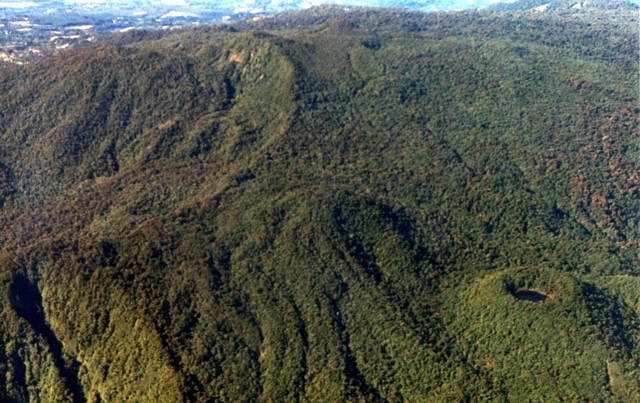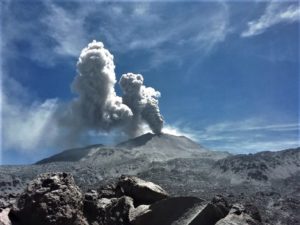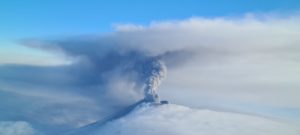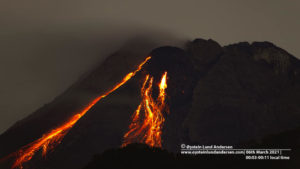February 23 , 2020.
Kamchatka , Klyuchevskoy :
VOLCANO OBSERVATORY NOTICE FOR AVIATION (VONA).
Issued: February 23 , 2020
Volcano: Klyuchevskoy (CAVW #300260)
Current aviation colour code: ORANGE
Previous aviation colour code:orange
Source: KVERT
Notice Number: 2020-25
Volcano Location: N 56 deg 3 min E 160 deg 38 min
Area: Kamchatka, Russia
Summit Elevation: 15580 ft (4750 m)
The explosive eruption of Klyuchevskoy volcano continues: the Vulcanian activity is observing on 30-31 January, 2020.
Volcanic Activity Summary:
A moderate explosive eruption of the volcano continues, the Strombolian activity is noting. According to satellite data, a gas-steam plume containing some amount of ash is extending for 84 km to the east of the volcano.
A moderate explosive eruption of the volcano continues. Ash explosions up to 16,400-23,000 ft (5-7 km) a.s.l. could occur at any time. Ongoing activity could affect low-flying aircraft.
Volcanic cloud height:
16400-18040 ft (5000-5500 m) AMSL Time and method of ash plume/cloud height determination: 20200223/0540Z – Himawari-8
Other volcanic cloud information:
Distance of ash plume/cloud of the volcano: 52 mi (84 km)
Direction of drift of ash plume/cloud of the volcano: E / azimuth 89 deg
Source : Kvert .
Photo : IVS FEB RAS, KVERT.
El Salvador , San Miguel ( Chaparrastique ) :
At 10:55 a.m. The San Miguel volcano emitted an ash cloud over a period of 10 minutes. The cloud reached a maximum of 400 meters above the level of the crater and the generation of at least two pulses was observed, which manifested itself in the form of a small column of ash and gas (see figure 1).
Volcanologists in the Piedra Azul region, 5 km southwest of the crater, report a slight fall of ash in the region. During this period, the seismic amplitude recorded in the VSM station located in the upper part of the northern flank of the volcano, reached 510 units in ten minutes on average, 150 units being normal. The recording of the earthquakes shows that they were generated continuously, which is known as a volcanic tremor (see Figure 2). After this event, until the publication of this report, the volcano maintained a slight degassing of its crater.
The scenario observed today was considered most likely in special report 1, released yesterday. According to the evaluation of volcanic activity, this scenario could continue in the coming days, without excluding a process of greater energy, which could generate higher columns and containing more ash. What happened today, at 10:55 a.m., technically, is considered a small-scale eruptive process.
Figure 2. Seismogram recorded today in the VSM station
The Ministry of the Environment and Natural Resources (MARN) maintains 7/24 surveillance of the volcano and close communication with the Directorate General of Civil Protection and local observers.
We call on residents, tourists and mountaineers to stay away from the crater of the volcano, due to small explosions with ash fumes that the volcano presents, which can lead to the release of gas and ash in a southern direction -West, transported by preferential winds.
This report will be updated next Friday, February 28. In the event of a significant change in the activity of the volcano, a special prior report will be issued.
Source : Marn .
Iceland , Thornbjorn / Reykjanes :
This evening, Feb. 22nd at 20:10 an M3.1 earthquake was detected 3.6 km N of Reykjanestá. A few aftershocks have been detected. A seismic swarm has been ongoing there since 15th of February.
The IMO warns about cave excursions in the Eldvörp area on the Reykjanes Peninsula. Hazardous levels of CO2 and O2 were measured there on Thursday, 20th of February, in a cave close to a parking lot, popular for hikers.
The earthquake swarm on Reykjanes peninsula is ongoing.
The row of craters at Reykjanes Peninsula called Eldvörp was formed in an eruption in the early 13th century . A lava field from the eruption covers a large area west of the small mountains Svartsengi and Þorbjörn. The lava field stretches from the northernmost crater all the way to the south shore. The row of craters is about 10 kilometers long and consists of many craters, and some are even still warm with steam evaporating from the ground, indicating that the craters are still active and the magma still lurking beneath.
Sources : IMO , hiticeland.com .
Photo : Ómar Ragnarsson.
Costa Rica , Turrialba / Poas / Rincon de la Vieja / Irazu / Barva :
Daily report on the state of volcanoes. , Date: February 21, 2020, Updated at: 11:45:00 AM.
Turrialba volcano:
No eruption is reported.
Seismic activity is similar to that of yesterday.
At the time of this report, the winds were blowing southwest.
Seismographs continue to record mainly long-period (LP) earthquakes. The seismic signal of volcanic tremors is not recorded. There was no eruption or emission of ash. The fumaroles of the West crater are rich in water vapor.
Poas Volcano:
No eruption is reported.
Seismic activity is more important than that of yesterday.
At the time of this report, the winds were blowing southwest.
Seismographs record LP earthquakes of the long period (LP) type with very short amplitude and intermittent volcanic tremors. The acid lake persists in the active crater with submerged fumaroles and also partially out of the water.
Rincon de la Vieja volcano
No eruption is reported.
Seismic activity is more important than that of yesterday.
At the time of this report, the winds were blowing northwest.
Seismographs record seismic signals of intermittent volcanic tremors and sporadic long-period (LP) earthquakes. There are no hydrothermal explosions or significant emission of vapor and gas from the active crater. The recent rains continue to gradually carry away some of the materials that have accumulated in the high beds of rivers north of Rincon due to the hydrothermal explosion of January 30, 2020.
Irazú volcano
No eruption is reported.
A seismic swarm has occurred but is associated with tectonic and non-volcanic activity. There was a small shift in the antenna sector on February 16. The main slide in the tower sector continues with constant acceleration. The level of the lake is rapidly decreasing.
Barva volcano:
No eruption is reported.
Sporadic volcano-tectonic (VT) earthquakes in the vicinity have been recorded.
Source : Ovsicori / Maria Martinez Cruz.
Photos : Dr Paulo Ruiz , RSN , Federico Chavarria Kopper


